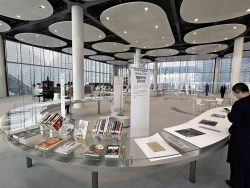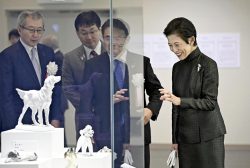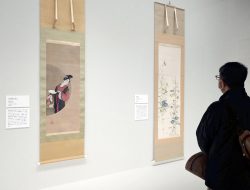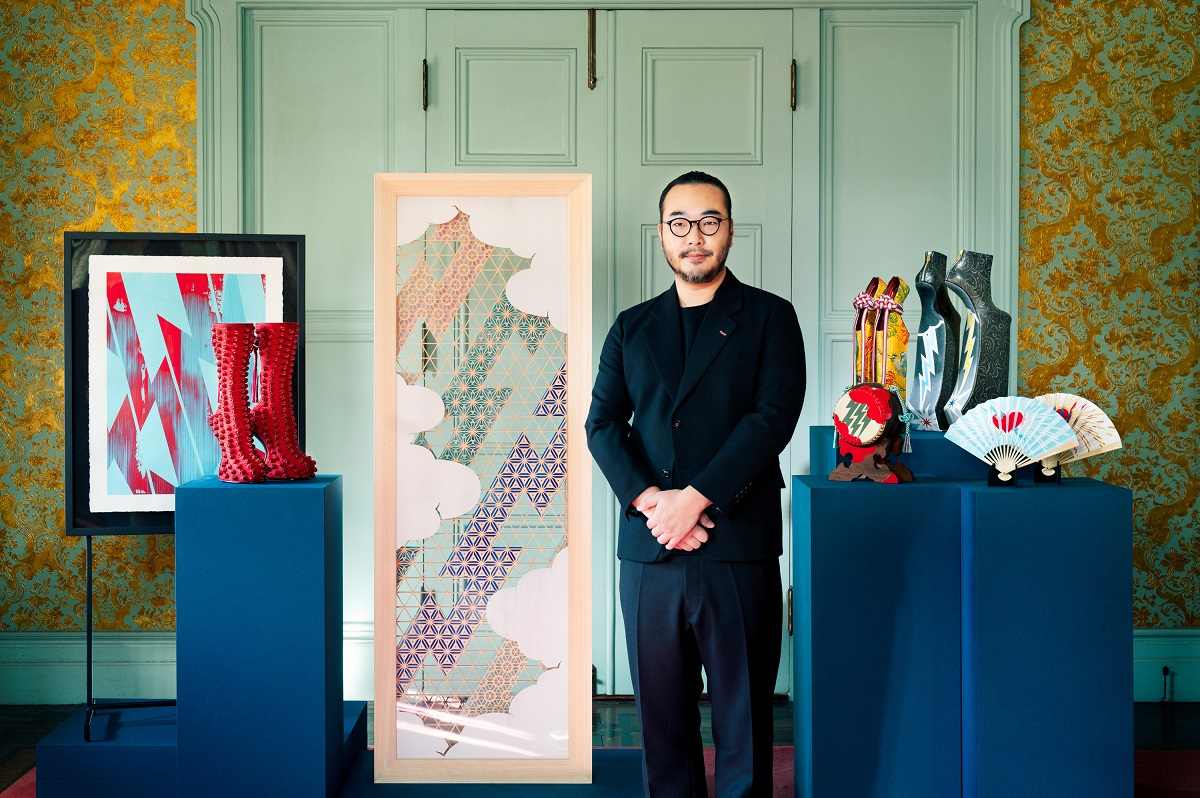
Exhibition director Noritaka Tatehana poses with some of his collaborative works.
15:29 JST, March 6, 2024
Taiko drums painted with lightning bolts and haute couture heelless shoes inspired by geta sandals are just a sampling of the items on display at Edo Tokyo Rethink, an exhibition of traditional Japanese crafts stamped with a contemporary artist’s innovative spin.
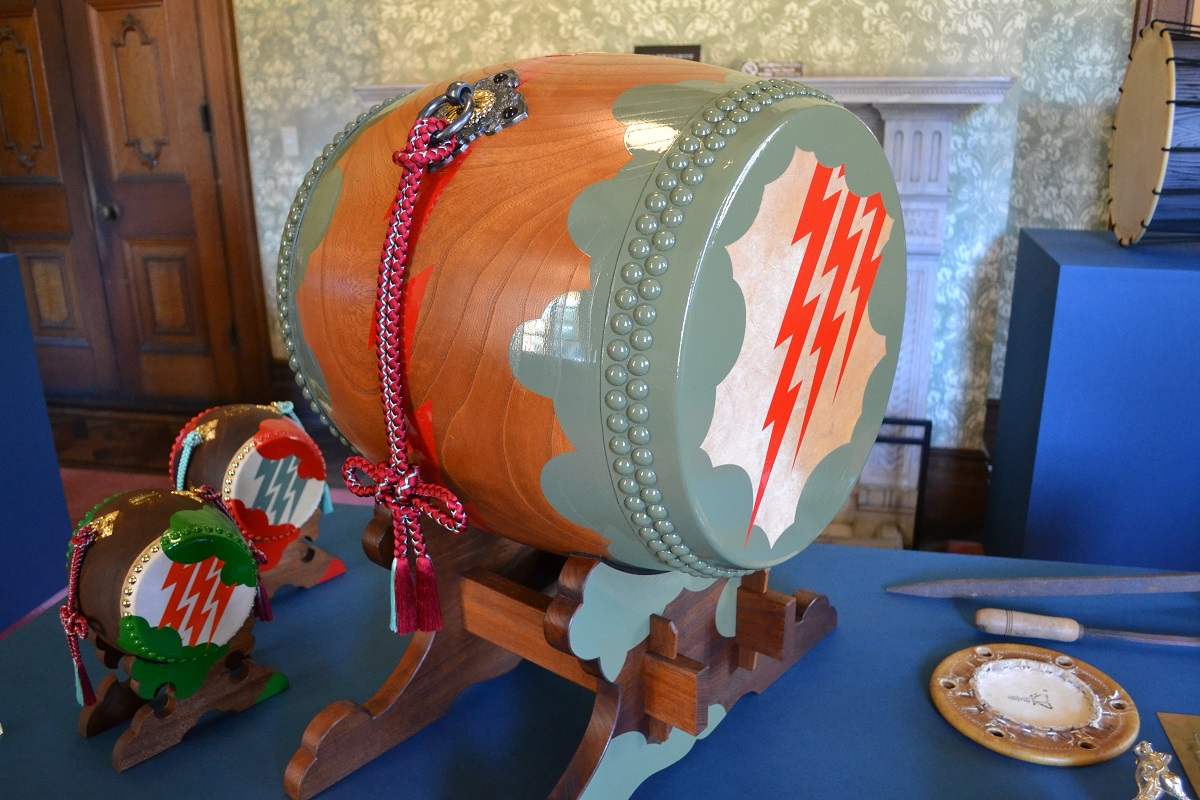
Taiko drums painted with lightning bolts
The exhibition features the distinctive crafts of traditional workshops based in Tokyo along with collaborative pieces made by the shops and Noritaka Tatehana, the exhibition’s director. Works by Tatehana, famous for his heelless shoes inspired by geta wooden sandals, can be found in museums around the world.
Ibasen, a workshop founded in 1590, makes sensu folding fans. The shop initially became known for its fans painted by ukiyo-e artists in the Edo period (1603-1867). Tatehana’s versions are painted in such a way that the fan must be looked at from a particular angle to see the decorative design properly.
The medals for the 2019 Rugby World Cup had ribbons made from kumihimo braided silk crafted by the Ryukobo workshop. It is the only shop in Tokyo — which was called Edo until 1868 — that completely handles the designing, dyeing and braiding of threads for kumihimo woven fabric. One of its contemporary products glows in the dark.
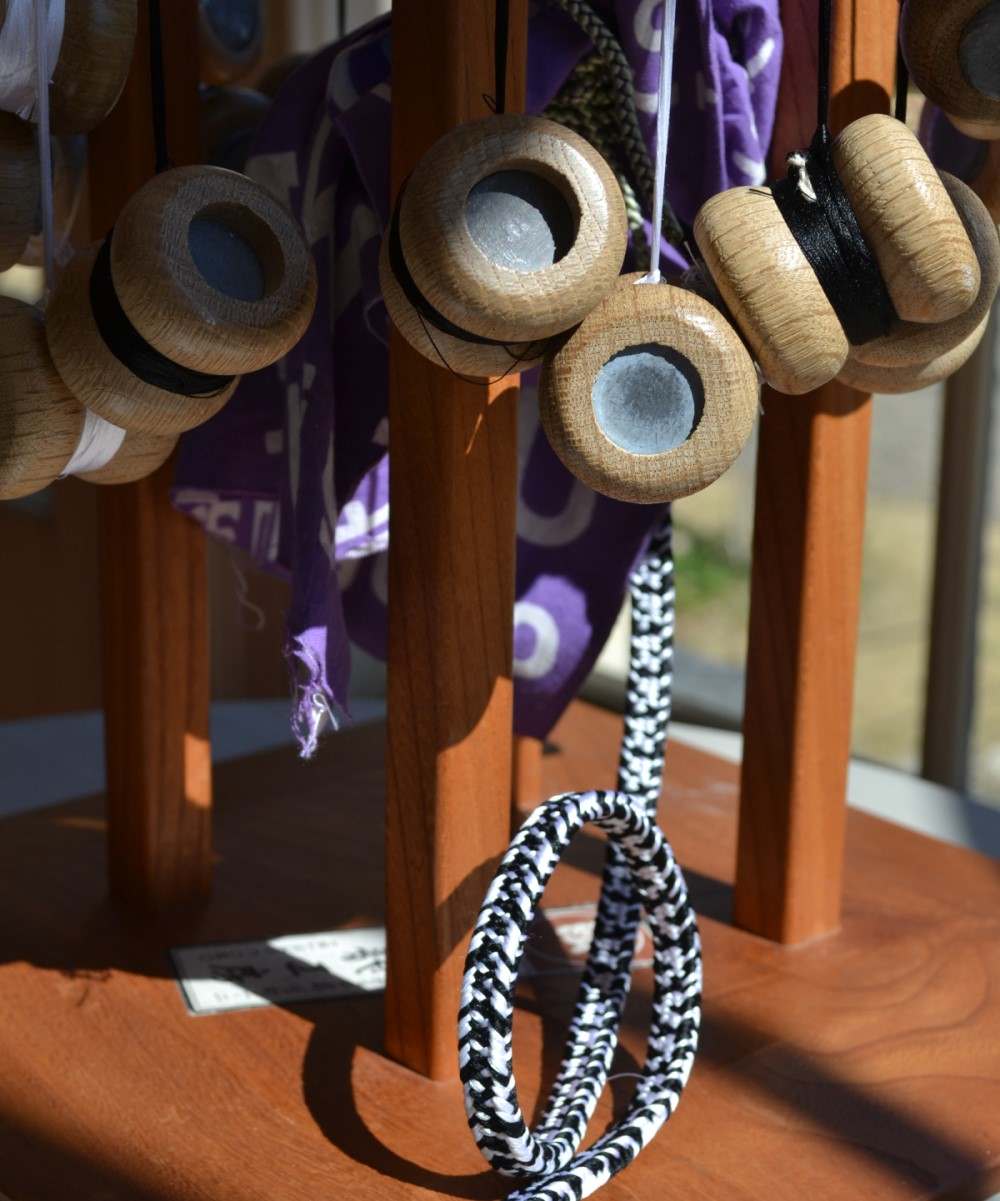
A kumihimo bracelet in a marudai braiding stand
Items for everyday use are also on display. The Uno Brush workshop produces handmade brushes for clothing, meant to keep fabric clean and spiffy. That didn’t stop Tatehana from using them to make paintings, but it does demonstrate their range of utility and his ingenuity.
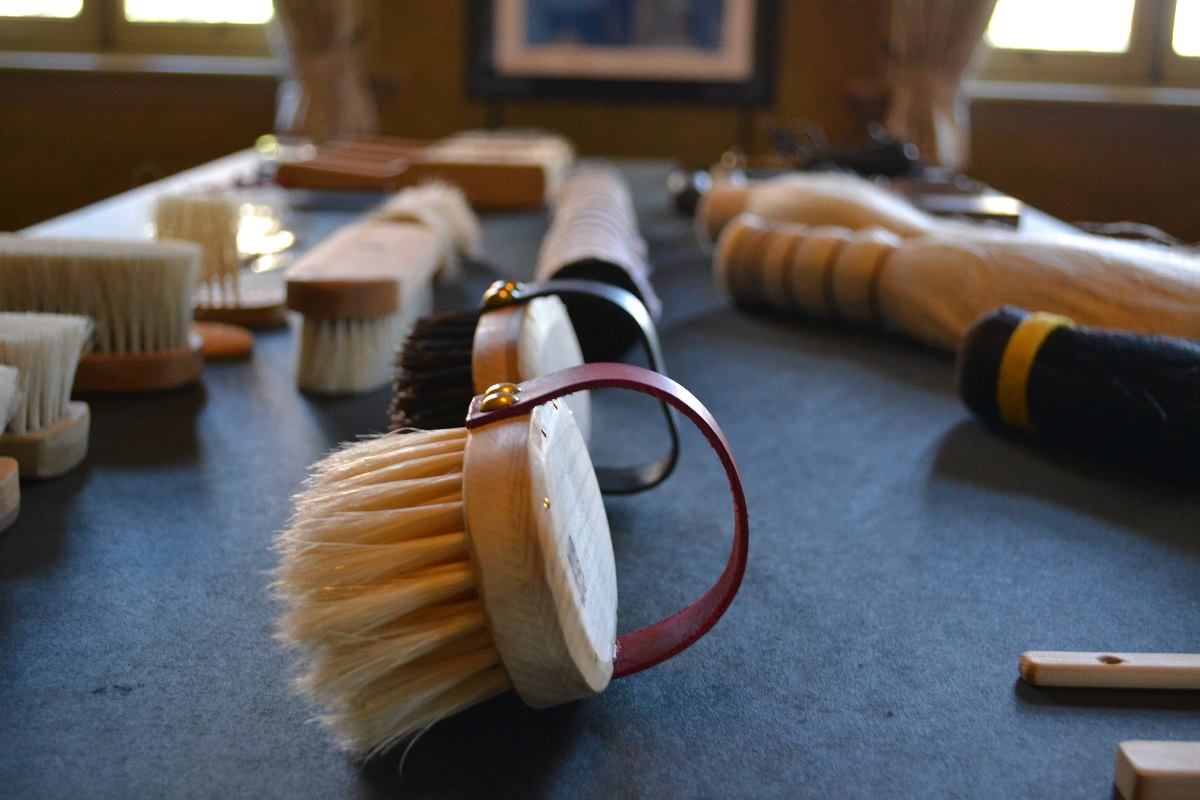
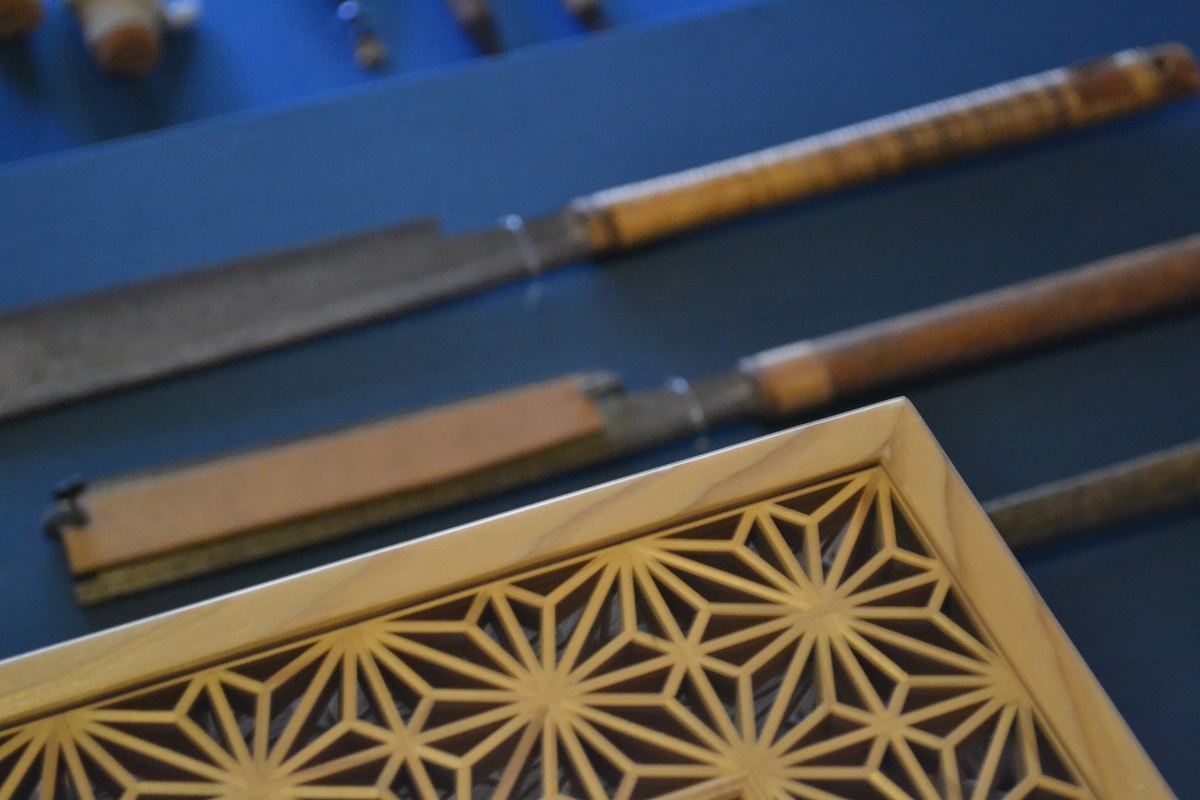
Top: Various brushes made by Uno Brush
Bottom: Part of a kumiko wooden panel is seen with the tools used to make it.
The exhibition is being held at the Kyu-Iwasaki-tei Gardens, which used to be a sprawling estate with over 20 buildings. Only three structures remain, including a guesthouse mansion that is a registered Important Cultural Property.
Kinkarakawashi gilt paper used to cover the mansion’s walls, but much of it has been lost. Another workshop participating in the exhibition, the Kinkarakami Institute, is restoring the guesthouse with this type of wallpaper.
For visitors wanting a hands-on experience, there are three craft-related events. One uses yubigumi-himo for participants to braid a good luck bracelet. Another allows participants to create a coaster utilizing the kumiko craft of snugly fitting wooden pieces together in intricate designs. In the third one, adults can taste Edo wagashi sweets and nihonshu rice wine. Reservations are required for these events.
The exhibition runs through March 10 and has an online store in multiple languages.
"Culture" POPULAR ARTICLE
-

Van Cleef & Arpels Dazzles with Art Deco Artisanry at Tokyo Exhibit
-

Disney’s ‘Twisted-Wonderland’ Animated Series Puts Villains in Spotlight: New Show Features School Inspired by Classic Disney Films
-

Ayumi Hamasaki’s Shanghai Concert Canceled Day Before Schedule as Part of Beijing Backlash
-

‘The World Masterpiece Theater Series’ Celebrates 50 Years; Animator Looks Back on Creating Anime Classics
-

Popularity of Piggy Banks Across Time and Place Seen at Bank’s Museum of Money Boxes in Hyogo Pref.
JN ACCESS RANKING
-

Tokyo Economic Security Forum to Hold Inaugural Meeting Amid Tense Global Environment
-

Keidanren Chairman Yoshinobu Tsutsui Visits Kashiwazaki-Kariwa Nuclear Power Plant; Inspects New Emergency Safety System
-

Imports of Rare Earths from China Facing Delays, May Be Caused by Deterioration of Japan-China Relations
-

University of Tokyo Professor Discusses Japanese Economic Security in Interview Ahead of Forum
-

Japan Pulls out of Vietnam Nuclear Project, Complicating Hanoi’s Power Plans


